Travelling off-grid doesn’t mean you should go without your home comforts. If you want to power your laptop, coffee machine, microwave, or other 240V appliances while on the road, you need a caravan inverter. This essential device allows you to convert 12V battery power into 240V electricity, giving you access to the same power supply as you would have at home.
Why Inverters Matter for Australian Caravanners
For many Australian caravanners, the appeal of off-grid travel lies in the freedom to explore remote destinations without relying on powered sites. A well-chosen inverter provides the convenience of running essential 240V appliances, even when you’re far from caravan site power.
Choosing the right inverter depends on your energy demands and the appliances you plan to run. Whether you’re charging camera batteries or running an air conditioner, a quality caravan inverter ensures your setup meets your power needs without compromise.
Basic Inverter Functionality
A caravan inverter works by converting DC power from your caravan’s battery into AC power, which is required for standard 240V appliances. Here’s a quick breakdown of key terminology:
-
12V to 240V inverter – Converts 12V DC battery power into usable 240V AC power.
-
Pure sine wave inverter – Delivers clean, stable power suitable for sensitive electronics like laptops and TVs.
-
Modified sine wave inverter – A more affordable option, but less efficient and not always compatible with modern appliances.
Australian Power System Context
Ensuring your inverter meets Australian inverter installation regulations is critical for safety and reliability. Some inverters also need to be hardwired by a licensed electrician, depending on their output capacity and intended use. It is important to always check manufacturer guidelines and relevant caravan power system regulations before installation.
By understanding how caravan inverters work and why they’re essential for off-grid caravan power, you’ll be better equipped to choose the right one for your setup.
In the following sections, we’ll explore the different types of inverters, key features to look for, and how to match an inverter to your energy needs.
Types of Inverters for Caravans
Choosing the right inverter for your caravan power system depends on the type of appliances you plan to use. There are two main types of caravan inverters: pure sine wave inverters and modified sine wave inverters. Both have their advantages and limitations, which we’ll break down in detail below.
Pure Sine Wave Inverters
A pure sine wave inverter produces a smooth, consistent waveform that closely mimics the electricity supplied by the power grid. This makes it the best choice for powering sensitive electronics and appliances that require stable voltage and frequency.
Benefits of Pure Sine Wave Inverters
Safe for Sensitive Electronics – Laptops, and high-end audio/visual equipment require pure sine wave power to function correctly and avoid potential damage.
Efficient Power Consumption – Appliances run cooler and more efficiently, reducing strain on your caravan’s battery system.
Quieter Operation – Motors in appliances like fridges, fans, and air conditioners run more smoothly, without the buzzing or humming associated with modified sine wave inverters.
Ideal Applications
-
Laptops, gaming consoles, and TVs
-
High-efficiency refrigerators and coffee machines
-
Microwave ovens and induction cooktops
Modified Sine Wave Inverters
A modified sine wave inverter produces a stepped or squared-off waveform, which is less smooth than a pure sine wave. While this makes the inverter more affordable, it can cause some appliances to run less efficiently or even malfunction.
Instead of a smooth oscillating wave, a modified sine wave inverter switches between positive and negative voltage in abrupt steps. This can lead to:
Reduced Efficiency – Appliances consume more power than necessary.
Electrical Noise & Interference – Can cause buzzing in audio devices and flickering in LED lights.
Limited Compatibility – Some appliances, particularly those with microprocessors, may not function properly.
Suitable Applications
Despite its limitations, a modified sine wave inverter can be a budget-friendly solution for basic power needs. It is best suited for power tools or simple kitchen appliances like kettles, blenders and toasters.
|
Feature |
Pure Sine Wave Inverter |
Modified Sine Wave Inverter |
|
Waveform Type |
Smooth sine wave (like grid power) |
Stepped/square wave |
|
Appliance Compatibility |
Works with all appliances |
Some devices may not work |
|
Power Efficiency |
High |
Medium to low |
|
Ideal For |
Laptops, TVs, fridges |
Power tools, basic appliances |
|
Common Brands |
Victron, Enerdrive, Renogy |
Dometic |
If you plan to rely on a comprehensive caravan power system for an off-grid caravan power setup, a pure sine wave inverter is the best long-term investment. However, for casual travellers with minimal power needs, a modified sine wave inverter may suffice.
Choosing The Correct Inverter Size
Power Needs Assessment
-
Match the Inverter to the Load – Consider your daily routine in the caravan. Identify the appliances you plan to run simultaneously and add up their total wattage. Focus on peak watts, as this is the highest power draw when appliances start up.
-
Example: A coffee machine can draw between 1300W–1800W when first turned on but drops significantly between pours.
-
-
Continuous vs. Peak Power – Appliances with motors, compressors, or pumps (e.g. air conditioners, fridges, power tools) have higher peak power draw than their standard rating. Your pure sine wave inverter must handle this peak demand to avoid damage.
-
Pro Tip: Stagger appliance usage to avoid exceeding the inverter’s peak limit.
-
-
Buffer Recommendations – It’s best to oversize your inverter by at least 15% above your peak power requirement to prevent overload and extend lifespan.
-
Calculate Power Duration – Once you've chosen an inverter, you need to determine how long your battery will run while powering appliances.
-
Example: If your laptop charger is plugged into the caravan inverter and draws 50W continuously, that’s about 4 Amps at 12 Volts, using 96Ah over 24 hours.
-
Keep in mind that converting DC to AC costs energy. A 1000W inverter can draw around 1 Amp per hour on standby, even when not powering an appliance.
-
Inverter Size Recommendations by Appliance
-
Small inverters (150W–400W) – Suitable for charging phones, laptops, cameras, and small devices.
-
Medium inverters (600W–1800W) – Can run power tools, TVs, gaming consoles, and small microwaves.
-
Large inverters (2000W–3000W) – Required for air conditioners, coffee machines, induction cooktops, and high-powered appliances.
Battery Considerations
Your caravan power system must support the inverter’s demand. Check your battery’s maximum discharge current rating (A) to ensure it can power the inverter.
Example: An Enerdrive 200Ah B-TEC Lithium Battery has a max discharge of 200A at 12.5V, equating to 2500W. This makes it suitable for a 2000W pure sine wave inverter.
Australian Climate Zone Considerations
Your off-grid caravan power needs vary depending on location:
-
Northern Australia – 5.5–6.5 solar hours (High humidity, wet season challenges).
-
Southern Australia – 3–5 solar hours (Lower winter solar input).
-
Central Australia – 6–7 solar hours (Extreme heat may reduce battery efficiency).
-
Coastal regions – 4.5–6 solar hours (Moderate conditions, steady performance).
By following these steps, you can size your Australian inverter installation correctly for a reliable off-grid caravan power system. If this process is too complex check out our inverter calculator. It is a great tool to determine the best size inverter for your caravan and estimate how long you can run appliances. Check it out here.
Battery Integration and Power Systems
Choosing the best battery setup is just as important as selecting the right 12V to 240V inverter for your off-grid caravan power system. The right battery ensures your inverter operates safely and efficiently, avoiding issues like voltage drops, overheating, or power shortages.
Battery Type Compatibility
Not all batteries are created equal when it comes to caravan inverters. Here’s how different battery types compare:
Lithium (LiFePO4) Batteries
-
High efficiency & deep discharge – Can be discharged up to 80-90% without damage.
-
Lighter & more compact – Approximately half the weight of AGM batteries.
-
Longer lifespan – Up to 10 years when well looked after.
-
Quicker charging – Accepts higher charge currents, reducing charge time.
-
Higher upfront cost – But lower lifetime cost due to longevity.
A general rule of thumb: A 100Ah lithium battery can typically support a 1000W inverter, assuming a proper energy management setup.
AGM and Lead-Acid Batteries
-
Lower upfront cost – More affordable than lithium.
-
Lower efficiency – Can only be discharged 50% before damage occurs.
-
Shorter lifespan – Typically lasts 3-5 years.
-
Heavy and bulky – Can weigh twice as much as lithium for the same capacity.
If using AGM batteries, a larger battery bank is required to achieve the same usable power as lithium.
Battery Connection Methods
To scale up your caravan’s power system, multiple batteries may need to be connected. The three main connection types are:
-
Series Connection – Increases voltage, keeps capacity the same.
-
Example: Two 12V 100Ah batteries in series = 24V 100Ah system.
-
Used in 24V or 48V setups for efficiency.
-
-
Parallel Connection – Increases capacity, keeps voltage the same.
-
Example: Two 12V 100Ah batteries in parallel = 12V 200Ah system.
-
Ideal for 12V systems requiring more storage.
-
-
Series-Parallel Connection – Increases both voltage and capacity.
-
Example: Four 12V 100Ah batteries wired as 24V 200Ah.
-
Used for high-demand inverters (2000W+).
-
Australian battery installations should include proper fusing and isolation switches for safety.
Critical Cable Sizing Guide
Undersized cables can lead to voltage drops, inverter shutdowns, or overheating. Choosing the correct cable size is essential for system efficiency and safety.
|
Inverter Size |
Battery Voltage |
Recommended Cable Size |
|
600W |
12V |
16mm² |
|
1000W |
12V |
25mm² |
|
2000W |
12V |
50mm² |
|
3000W |
12V |
70mm² |
|
2000W |
24V |
25mm² |
|
3000W |
24V |
50mm² |
Key Considerations:
-
Shorter cables reduce voltage drop.
-
Use fused battery cables to prevent overcurrent damage.
-
If unsure, choosing a larger cable size improves efficiency and reduces heat buildup.
Installation and Integration
Proper installation of your 12V to 240V inverter is critical to ensuring a safe, efficient, and enduring caravan power system. Whether you're installing the inverter yourself or hiring a professional, understanding Australian regulations, wiring best practices, and safety considerations is essential.
Australian Standards Compliance
In Australia, caravan electrical systems must meet AS/NZS 3001.2:2022 standards to ensure safety and compliance. While 12V wiring can be installed DIY, all 240V wiring must be done by a licensed electrician and certified. Safety features like RCDs and circuit breakers are required, and some states mandate a Certificate of Electrical Compliance. Incorrect installation can cause fire risks, electrical shocks, and legal issues, so professional installation is recommended for 240V systems.
Mounting and Placement Best Practices
Choosing the right location for your pure sine wave inverter is crucial for performance and longevity, especially in Australia’s harsh climate.
Ventilation & Heat Management
-
Avoid enclosed spaces: Inverters generate heat and need proper airflow to prevent overheating.
-
Position near batteries: Keep cable lengths short to minimise power loss but ensure sufficient ventilation.
-
Prevent exposure to moisture and dust: Install in a dry, protected area away from water ingress.
Accessibility Considerations
-
Mount the inverter in an easily accessible location for maintenance and operation.
-
Ensure there’s space for cooling fans and airflow clearance around the unit.
-
If using a remote control panel, install it in a convenient spot for easy monitoring.
Wiring Diagrams and Connection Methods
Integrating your inverter into your off-grid caravan power system requires proper wiring configurations to maintain efficiency and safety.
Step-by-Step Installation Guide (For Licensed Electricians)
-
Determine the connection type:
-
Direct connection to batteries (for standalone operation).
-
Integration with an existing 12V system (for combined solar, battery, and generator use).
-
-
Install appropriate fuses & circuit breakers:
-
Install a fuse between the battery and inverter to protect against surges.
-
Use an RCD (Residual Current Device) on the 240V output for added protection.
-
-
Follow AS/NZS wiring regulations:
-
Use correctly rated cables to handle inverter power draw.
-
Keep cable runs as short as possible to reduce voltage drop.
-
Avoid running DC and AC cables together to prevent electrical interference.
-
-
Safety Feature Implementation:
-
Install circuit breakers for overload protection.
-
Use proper grounding to prevent electrical faults.
-
Test the system before full operation to ensure safe and efficient performance.
-
When installing a caravan inverter, always prioritise safety, efficiency, and compliance with Australian standards. While small 12V setups may be a DIY project, any 240V integration must be done by a licensed electrician.
A correctly installed inverter will seamlessly integrate with your off-grid power system, ensuring reliable power for all your caravan adventures.
Brand and Model Analysis
|
Brand/Model |
Power Output |
Special Features |
Warranty |
|
1200W |
High peak power, VE.Direct port |
5 years |
|
|
3000W |
Inverter/charger, PowerAssist, parallel operation |
5 years |
|
|
2000W |
LCD display, AC transfer switch, RCD protection |
5 years |
|
|
2600W |
Inverter/charger, programmable LCD, transfer switch |
5 years |
|
|
1000W |
USB output, thermal cooling, compact design |
2 years |
|
|
2000W |
Remote control, LCD display, safety alarms |
2 years |
|
| Renogy 200W UPS | 2000W | Remote Control, stable output voltage at full load, | 1 year |
| Renogy 3000W LCD | 3000W | LCD and LED display, peak efficiency >90%, 4-Stage battery charger | 1 year |
| Renogy Rego 3000W | 3000W | Bluetooth monitiouring and control, Automatic generator starter, compact | 1 year |
If you’re looking for a good quality caravan inverter, you can’t go past Enerdrive. These are the most popular sizes, plus they are backed by trusted brands.
Enerdrive delivers exceptional value for money. You can also get all-in-one solutions, including a lithium battery, AC & DC charger, monitor and inverter in one simple package. This is not only great bang for your buck, it also gives you confidence that everything will run together like clockwork.
Victron is a market leader in off-grid travel setups, so you know you are getting a quality piece of gear that will last the distance. The main advantage of Victron products is that they offer a generous 5 year warranty. Plus, they have an extensive range of inverters to choose from for caravans, camper trailers and off grid cabins or homes.
Renogy inverters are a popular choice for caravan and off-grid power systems, known for their efficiency, reliability, and affordability. Renogy inverters are designed to seamlessly convert 12V DC power to 240V AC, making them ideal for running household appliances, entertainment systems, and sensitive electronics while on the road. With features like advanced protection systems, quiet operation, and high surge capabilities this is definitely a brand to look into.
Integrating Power Sources in an Off-Grid Caravan
To keep your caravan inverter running efficiently, you need to integrate different power sources like solar panels, shore power, and generators.
Solar Power Integration
Solar panels help reduce reliance on external power, but they must be properly connected to charge controllers, batteries, and your 12V to 240V inverter.
-
Sizing Your Solar System: Calculate your daily power use and choose panels that generate 1.5–2 times that amount. Sunnier areas need fewer panels, while cloudy regions require more.
-
Charge Controllers: These regulate solar power to charge batteries safely. MPPT controllers are the most efficient, boosting output by up to 30%.
-
Australian Climate Considerations: Queensland gets more sun, while Tasmania is cloudier. Panel placement, tilt, and cleanliness affect performance.
Shore Power & Generator Backup
When solar isn’t enough, shore power and generators provide backup energy.
-
Automatic Transfer Switch (ATS): Automatically switches between battery and shore power, with features like surge protection.
-
Manual Switching: Requires selecting power sources manually but is more affordable.
-
Power Prioritisation: Many inverters allow you to set power source preferences, using solar first, then generator, then shore power as needed.
Monitoring & Smart Management
Good monitoring helps prevent power shortages.
-
Battery Monitoring: Tracks charge levels and alerts you to issues.
-
Remote Management: Smartphone apps let you monitor power use and fix problems remotely.
-
Smart System Integration: Connects all power components to automatically adjust based on conditions, ensuring efficiency and reliability.
Using Your System In Australian Conditions
Setting up a caravan inverter in Australia requires understanding appliance power needs, managing energy for off-grid stays, and adapting to different regional challenges.
Running Appliances on Your Inverter
Different appliances have unique power requirements, so balancing their usage is key.
-
Air Conditioners: Require a 2000W+ inverter due to high startup power. A large solar setup and high-capacity batteries help run them off-grid. Parking in the shade can reduce usage.
-
Kitchen Appliances: Coffee machines, toasters, and blenders need 1200W–2000W, drawing short bursts of high power. Avoid using multiple high-wattage appliances at once.
-
Entertainment Systems: TVs and sound systems use less power (50W–150W each), but running them for long hours can drain batteries if not managed properly.
Power Management for Long Off-Grid Stays
To extend battery life and avoid running out of power:
-
Load Shedding: Turn off non-essential appliances (like TVs and lights) when battery power is low.
-
Prioritizing Essentials: Keep fridges powered at all times, while air conditioning and entertainment should be used mainly during sunny hours.
-
Battery Conservation: Reduce use of high-wattage appliances and monitor battery charge to prevent deep discharges, which can shorten battery lifespan.
Regional Challenges & Solutions
-
Outback Travel: Limited charging options mean you need large deep-cycle batteries and possibly a generator for backup power.
-
Coastal Camping: Cloudy weather can reduce solar efficiency. A larger solar array or additional batteries can help store extra energy.
-
Seasonal Adjustments:
-
Summer: Maximize solar panel positioning for peak sunlight hours.
-
Winter: Shorter days and more clouds mean you may need a bigger battery bank or a generator for backup.
-
Maintenance and Troubleshooting
To ensure your caravan inverter performs optimally and reliably during your travels, regular maintenance and troubleshooting is essential. The harsh Australian conditions, such as extreme temperatures and dust, can take a toll on your system, making proactive care crucial for longevity and consistent operation.
Preventative Maintenance Schedule
Maintaining your caravan inverter through a structured schedule will help prevent problems before they occur. Below are key maintenance tasks to include in your routine.
6-12 Month Inspection Cycles
Regular inspections help detect potential issues early on. Aim to perform a thorough check every 6 to 12 months, depending on usage and environmental conditions.
-
Look for signs of wear and tear or corrosion on the inverter unit.
-
Inspect all cables, connectors, and wiring for signs of damage or fraying.
-
Ensure the inverter is functioning at peak efficiency by checking the input/output voltage.
Cleaning Procedures for Dusty Australian Conditions
Australia's dusty environments can quickly clog up your inverter, reducing efficiency and potentially causing overheating.
-
Regularly clean the exterior of the inverter with a soft cloth to remove dust and dirt.
-
Use compressed air or a vacuum with a soft brush attachment to clean vents and cooling fans, ensuring there is no dust buildup that could hinder airflow.
Connection Checks
Ensure that all connections, including battery terminals, solar input wires, and output circuits, are tight and corrosion-free.
-
Regularly check the battery connections for signs of corrosion, particularly in coastal areas where saltwater may cause accelerated corrosion or rust.
-
Tighten any loose connections to avoid voltage drops or arcing.
Cooling System Maintenance
A properly functioning cooling system is essential to prevent overheating, especially when operating your inverter in hot climates.
-
Check that the cooling fans and vents are free of obstructions and dust.
-
Ensure the inverter’s internal temperature is within the manufacturer’s recommended operating range, especially in extreme heat.
Overcoming Common Problems
While inverters are generally reliable, certain issues can arise, especially in the challenging Australian environment. Below are common problems and effective solutions for maintaining the performance of your caravan inverter.
Overheating in Extreme Temperatures
Australia’s high temperatures, especially in the outback and desert regions, can lead to overheating in your caravan inverter.
-
To compensate for this, ensure the inverter is installed in a shaded area, away from direct sunlight, to reduce the risk of overheating.
-
If you’re in a particularly hot climate, consider investing in a high-temperature-rated inverter that can withstand extreme conditions.
-
Ensure that the cooling system is functioning efficiently and that vents are not obstructed by dust or debris.
Battery Drainage Issues
Over time, battery drainage can become a common issue, especially during extended off-grid stays where solar energy may be limited.
-
Ensure your caravan inverter is set up with an efficient charging system that balances solar power input and battery storage.
-
Regularly monitor battery charge levels with a battery monitoring system to avoid deep discharges, which can significantly reduce battery lifespan.
-
If you notice significant drainage, check for any power-hungry appliances running unnecessarily and adjust your usage patterns accordingly
Startup Failures
Sometimes, your caravan inverter may fail to start properly, especially after long periods of disuse or in extreme weather conditions.
-
Check that the battery voltage is within the acceptable range for starting the inverter.
-
Ensure that all connections, including solar panel inputs and battery terminals, are secure and corrosion-free.
-
If the inverter does not start after ensuring proper connections, consider a system reset, or consult the manual for error codes related to startup failures.
Shutdown During Operation
An inverter that shuts down unexpectedly during operation could indicate an underlying issue such as overheating, an overload, or a battery fault.
-
Check the overload protection settings in your inverter to ensure they are correctly configured.
-
Ensure that your inverter is not overloaded by checking the combined power consumption of connected appliances.
-
If the inverter continues to shut down, allow it to cool down before attempting to restart it. If the issue persists, consult the user manual or consider professional servicing.
Error Codes Explained
Modern caravan inverters typically display error codes to help identify specific issues. Understanding these error codes is crucial for troubleshooting.
Overload error: Indicates that the inverter is attempting to power more than it can handle.
Low voltage error: Signals that the battery voltage is too low to operate the inverter.
Overtemperature error: Occurs when the inverter exceeds its safe operating temperature.
Battery connection error: Happens if there is a problem with the connection to the battery, such as a loose or corroded terminal.
Caravan Inverter FAQ’s
Can I run an air conditioner with my inverter?
Yes, but you need the right inverter and power setup.
-
Inverter Size: You’ll need a 2000W+ inverter to handle the high power needs of an air conditioner.
-
Surge Power: Air conditioners use extra power when starting up, often 2–3 times their running wattage. Your inverter must handle this surge.
-
Battery & Solar: Running an air conditioner off-grid requires a strong battery bank and a well-sized solar system.
Why does my inverter turn on when connected to shore power?
This can happen for a few reasons:
-
Automatic Transfer Switch: Some inverters switch between shore power and battery power automatically to keep appliances running.
-
Pass-Through Mode: Some inverters stay on standby while passing shore power to appliances.
-
Settings or Faults: Check your inverter’s settings. If it stays on when it shouldn’t, there might be a configuration issue or a fault.
Do I need a pure sine wave inverter?
It depends on what you’re powering.
-
Use pure sine wave for: Laptops, CPAP machines, entertainment systems, and other sensitive electronics. It provides stable, clean power.
-
Signs you need one: If your appliances make buzzing sounds, flicker, or don’t work properly, your current inverter may not be providing smooth power.
-
Modified sine wave is okay for: Basic devices like lights, fans, and fridges.
What’s the difference between continuous and peak power?
-
Continuous Power: The steady amount of power your inverter provides over time (e.g., a fridge running at 100W).
-
Peak Power: The short burst of extra power needed when appliances start up (e.g., an air conditioner surging to 2000W before settling lower).
Choosing the right caravan inverter is essential for ensuring reliable and efficient power while traveling across Australia. Whether you're running essential appliances, powering off-grid adventures, or integrating with solar and shore power, a well-sized and properly installed inverter can make all the difference in your setup.
Key factors to consider when choosing the best inverter for you include: inverter types, installation considerations, power management strategies, and troubleshooting tips. Investing in a pure sine wave inverter is often the best choice for those running sensitive electronics, while understanding battery capacity, surge power, and solar compatibility is crucial for maximizing efficiency.
Check out our inverter calculator here to find out what size inverter is right for you! Have any further questions? Give us a call on 1800 787 278 or shop our range of caravan inverters now.
DISCLAIMER* Please note, this advice is general in nature and we strongly recommend consulting the product manual and where relevant, a professional installer.
Comments (22)
Run aircon
I have a 200amp lithium, and I have 500 wats solar, would a 2000 wat inverter be another to run 1500wat aircon and how long thanksBy: Lloyd on 14 January 2025
www.caravanrvcamping.com.au Response
Hi Lloyd, when using an inverter on batteries you need to check the battery has a discharge current big enough to suit the maximum load of the inverter. Generally you would need to make sure your battery has a discharge current of 200A.
Inverter
I have just purchased Jayco Journey 2019 22.68-3 and adding a few items to be self contained off grid when camping. Currently it has 1 x solar 180wt and 1 agm 100AH battery. I have put another battery in and purchased putting 260wt solar to be installed. What is the best size inverter,I do have a victron 1200 in the caravan I'm selling, I could remove and use that but wanted to get feed back on options : I run necspresso coffee, low watt toaster, the accasional hair dryer, hair straighteners. Caravan TV /sterio. Charge laptops, phones etc. Spend most time off grid. Trying to device on inverter or small generator or should I have both. Want to do one spend and make sure it's the right $$ spent.By: Kim on 05 January 2025
www.caravanrvcamping.com.au Response
Hi Kim, when choosing an inverter there are a few things to factor in. Firstly you need to calculate the wattage draw of the appliances you want to use at any one time and ensure you select an inverter that can handle it. One important factor to consider is the discharge current of the battery. It needs to be able to match the inverter current needed to run. Please feel free to call us on 1800 787 278 to discuss further. Remember to always have a certified electrician install anything with 240v
Best Inverter Installation Option
I am considering getting an inverter for my caravan which has 2 x 100amp Lithium batteries. I was watching various videos of Inverter installations. Interestingly most show installation of only one 240v power point to draw from the inverter. While there was one installation that had the inverter linking into the caravans 240v wiring system so that all power points and any appliance could be operated. Albeit not at the same time. Can you give your thoughts on both approaches. Thank youBy: Arno Albrecht on 07 September 2024
www.caravanrvcamping.com.au Response
Hi Arno, you can certainly connect your inverter up to multiple GPO's in your caravan. This will how ever need to be done by a certified electrician
Inverter
Just want to run ice maker,coffee machine and usb charger for phones when not on power running 2 100amp agm battery's 170 solar panel and a 250 external solar to chase the sun what would be the Best size cheerBy: Barry rock on 10 July 2024
www.caravanrvcamping.com.au Response
Hi Barry, first and foremost you will need to calculate the wattage draw of each of these appliances. You need to ensure your inverter is large enough to power the highest watt consumer and then ensure you don't use them all at the same time. You will also need to check the discharge current of your batteries, sometimes they will be not be powerful enough to run the inverter. Feel free to give us a call on 1800 787 278 to discuss further. Remember an inverter is 240v power so you will need consult an electrician for installation.
Inverter
Hi I currently have a caravan with 2 x 100amp/hour batteries linked to solar and looking to install an inverter to be able to run potentially - aircon, fridge, microwave, washing washing machine and power points. What size should i get?By: Simon John Ruthenberg on 21 May 2024
www.caravanrvcamping.com.au Response
Hi Simon, thanks for reaching out. Your batteries will determine what size inverter you can use due. We will reach out to you directly on your email address to dive into your current battery system and what will suit.
which inverter
Hi I'm looking at getting an inverter for my campervan. It is running two 100 amp/hour AGM batteries, it won't be running a TV of large refrigerator . I will only need to charge powertool batteries and probably mobile phones and run a laptop ThanksBy: john stewart on 29 December 2023
www.caravanrvcamping.com.au Response
Hi John, we have reached out to you via email with some great options for you to check out. Alternatively you can connect with us through our LIVE Chat on our website or give us a call on 1800 787 278 in business hours
3500w inverter link to a200 amp/hr
This inverter connected the battery with h/d cables 600 mm long. Caravan system is lithium capable with a 35 amp charge system auto switching don’t use any appliances over 2000watts is an isolator required ? Inverter has it own on/ off switchBy: Ben on 09 December 2023
www.caravanrvcamping.com.au Response
Hi Ben, we have reached out to you on email as well. To answer your question a battery isolator is not necessary but would be helpful to ensure your battery doesn't drain.
Stand alone Inverter
Hi, i would like to install an inverter in my 15 year old caravan as a stand alone system meaning not connected into the existing wiring. This way the existing wiring is legal & untiuched, The inverter will be mounted near the batteries & connected by an extention lead direct to the microwave. to change back to Mains just unplug from Inverter power back to grid power. What if any are the regulations regarding mounting the inverter, can it be mounted close to the batteries? Thank you DavidBy: David Johnson on 29 October 2023
www.caravanrvcamping.com.au Response
Hi David, it is advised to consult with your electrician when you are installing an inverter. As this is a 240v appliance all regulations will need to be follow and your electrician is the best to advise on this
Size matters
I just wanted to ask your professional advice. I have a 4000w inverter and we do camping mainly at caravan parks, unpowered sites. We run a portable fridge freezer and a coffee machine and TV, we have solar panels for recharging, I've got 170ah deep cycle battery and it's not enough and want to go to lithium. Would a 200ah be enough for what we wantBy: Wade on 07 October 2023
www.caravanrvcamping.com.au Response
Hi Wade, thanks for leaving a comment. We have reached out directly through your email to talk about your power needs and upgrading to lithium.
Inverter hook up
Hi, is it possible to plug a lead into my inverter and then plug this into the caravan main’s input to make the caravan electrics live?By: Frank on 18 August 2023
www.caravanrvcamping.com.au Response
Hi Frank, when it comes to using an inverter and 240v you need to initiate the help of an electrician. They will advise the best way to set your power needs
Connecting appliances to an inverter
Hi, what is the best option to connect appliances to an inverter that is connected to my battery bank? Do I connect a power board such as a portable RCD unit into my inverter and run several appliances (240v fridge, microwave, kettle etc) off the powerboard, or do I need to plug my appliances directly into the inverter, which only has 2 outlets? Also, should I run all appliances through 1 inverter that is capable of running them all e.g. 5000W or do I run 2 smaller inverters such as 2 x 2000W and split the load between the inverters? Thanks.By: Darryn Dickson on 28 June 2023
www.caravanrvcamping.com.au Response
Hi Darryn, Thanks for reaching out. You are best to speak to a certified electrician who will need to do the installation for you. They will be able to provide you with specific professional advice
Retro fitting an inverter
Hello. I have a 200klw lithium battery in my van. Can the van be retro fitted with an inverter set up and operate safely without any issues?Will the existing electrics be ok?It is a reasonably recently made van. Thanks PeterBy: Peter Kiel on 21 June 2023
www.caravanrvcamping.com.au Response
Hi Peter, you can certainly add an inverter into your system. It is recommended this is done by a certified electrician as you are dealing with 240v. Please reach out to us on LIVE Chat or email sales@caravanrvcamping.com.au and we will be more than happy to discuss some options with you
off grid power
Hello I'm looking at setting up my Jayco Silverline 2019 for off grid power. I do have on the roof of the van 2- 225kw, 2 -120kw & 1 -180kw solar panels just need to know what I need to set up to either 2 -300 lithium batteries or maybe 2-200 lithium batteries. I did get the solar panels from you. the caravan does have a lot of tech knowledge being a Silverline. i would like to set most of it up my self but get a Auto Elec to just connect the cables which I can run.0403773434 Cheers AllanBy: Allan on 20 June 2023
www.caravanrvcamping.com.au Response
Hi Allan, thanks for reaching out. We have sent you an email to discuss your power needs a little more
Where to mount an inverter?
Hi there... I wish to install a 3000w inverter in my caravan and the most appropriate position is under the single bed above my external battery boxes that contain 3 x 120AH lithium batteries. Thats all good however my Truma Combi is also located under this bed. This is a gas/electric model and therefore my concern is whether the inverter should be mounted within the same compartment as the Truma given that I would be using the inverter 'off grid' and therefore the Truma would be operating on gas at the same time. Your views?By: Tony on 24 April 2023
www.caravanrvcamping.com.au Response
Hi Tony, between gas and water it wouldn't be recommended to install the inverter near either of these. They would need to be in separate spaces
95ah Leisure battery to inverter
Hi my camper van has a 95ah leisure battery running the 12v what size inverter would you recommend for a 150w heater and a 40 inch tvBy: John Curran on 21 April 2023
www.caravanrvcamping.com.au Response
Hi John, I have sent you a direct email in response to this comment. Amanda Caravan RV Camping
RCD on inverter power
What electrical protection to secure against 240v electric shock, is required when using an inverter?By: G - Shock on 16 April 2023
www.caravanrvcamping.com.au Response
Thanks for leaving a comment. When dealing with inverters it is always necessary to have a qualified electrician install your unit. They should be using RCD protection if the inverter doesn't come with it.
Invertor
Is a 5000 inverter to much for caravan were do I connect it up too I have a solar panel on caravan do I connect it to solar panel or battery ?? What charges investor ??By: Mr Dean on 19 March 2023
www.caravanrvcamping.com.au Response
Please call us on 1800 787 278 for advice on inverters.
240 v power
What device is required to apply 240v produced from an inverter in a caravan to the 240v outlets in the caravan ?By: Tim on 07 February 2023
www.caravanrvcamping.com.au Response
Hi there, you must engage an electrician to hard wire the inverter to your caravans 240V electrical system if that is what you require.
Switching to Lithium and Inverter
Do I need to get a new charger for my Lithium Batteries and Inverter ?? At present I have 2x 100AH Calcium and 2x120W solar panels which are not lasting the distance when cloudy weather sets in. The Charger is a MW "Mean Well" 3 Stage Switching Mode Charger. 3000W is probable sufficient for our usage. Thanks WayneBy: Wayne Humphris on 02 January 2023
www.caravanrvcamping.com.au Response
Hi Wayne, if you can give us a call on 1800 787 278 with the exact model number of the charger we can check its compatibility with lithium for you.
Inverter
I have a coffee machine, witch draws 2200 watts,at start up and have 270 ah batteries,what size inverter would suit.By: Tom on 05 December 2022
www.caravanrvcamping.com.au Response
When selecting an inverter it is always wise to give yourself a little leg room so I would recommend a 3000w inverter, these should be able to handle longer start up draws and also provide a little more power for other items ie; if you are charging a laptop and starting the coffee machine
Earthing
Hi just looking at putting a inverter into a caravan, my question is do you have to connect a earth to the frame of the caravanBy: Robert on 20 October 2022
www.caravanrvcamping.com.au Response
As inverters are using 240v it is advisable to have a qualified electrician install your inverter.


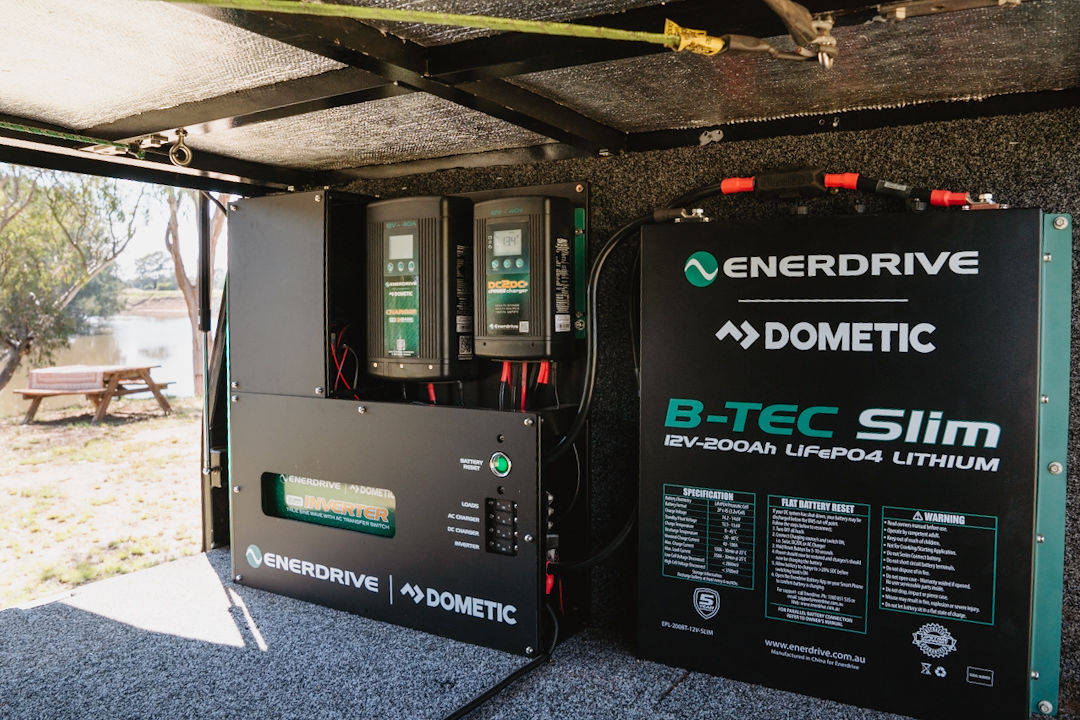
.jpg)

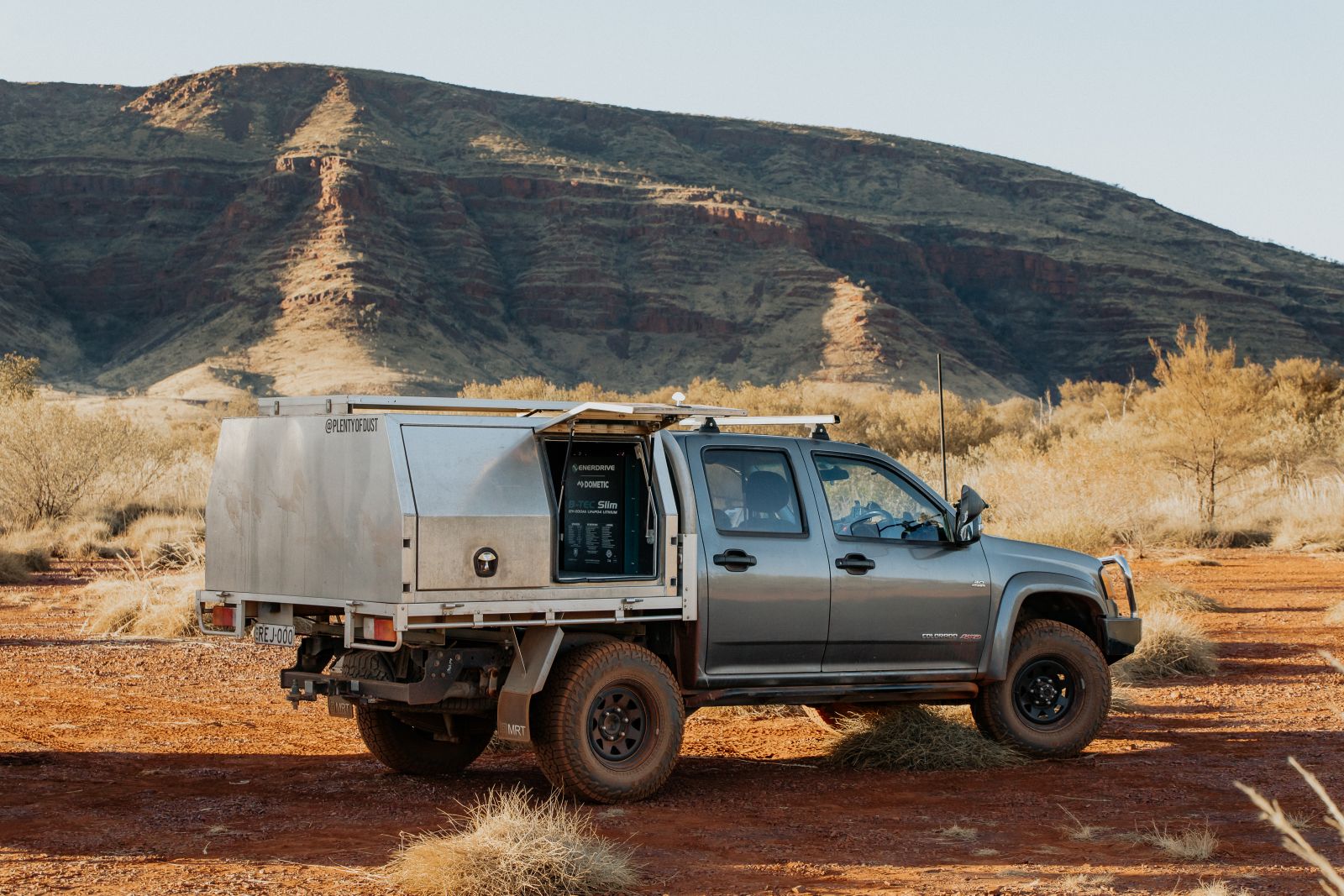
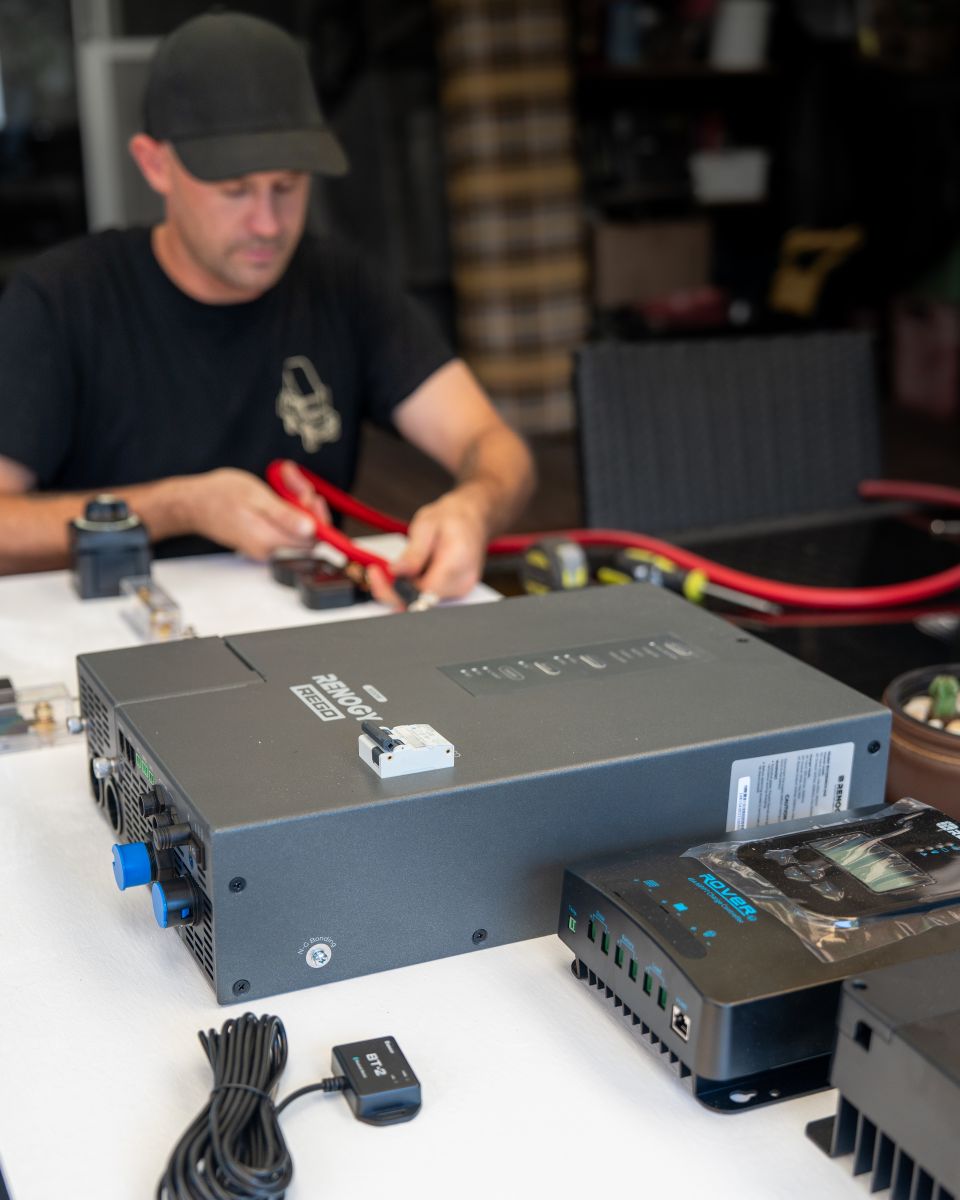
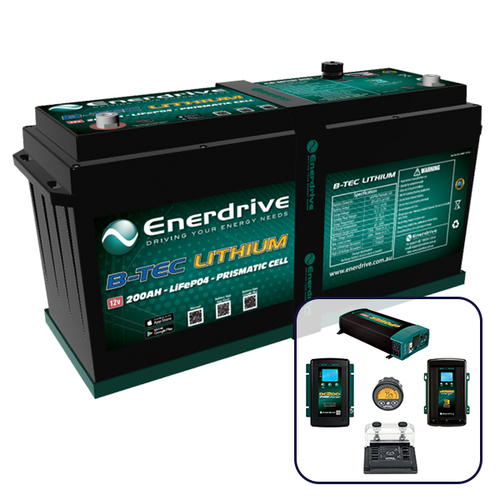
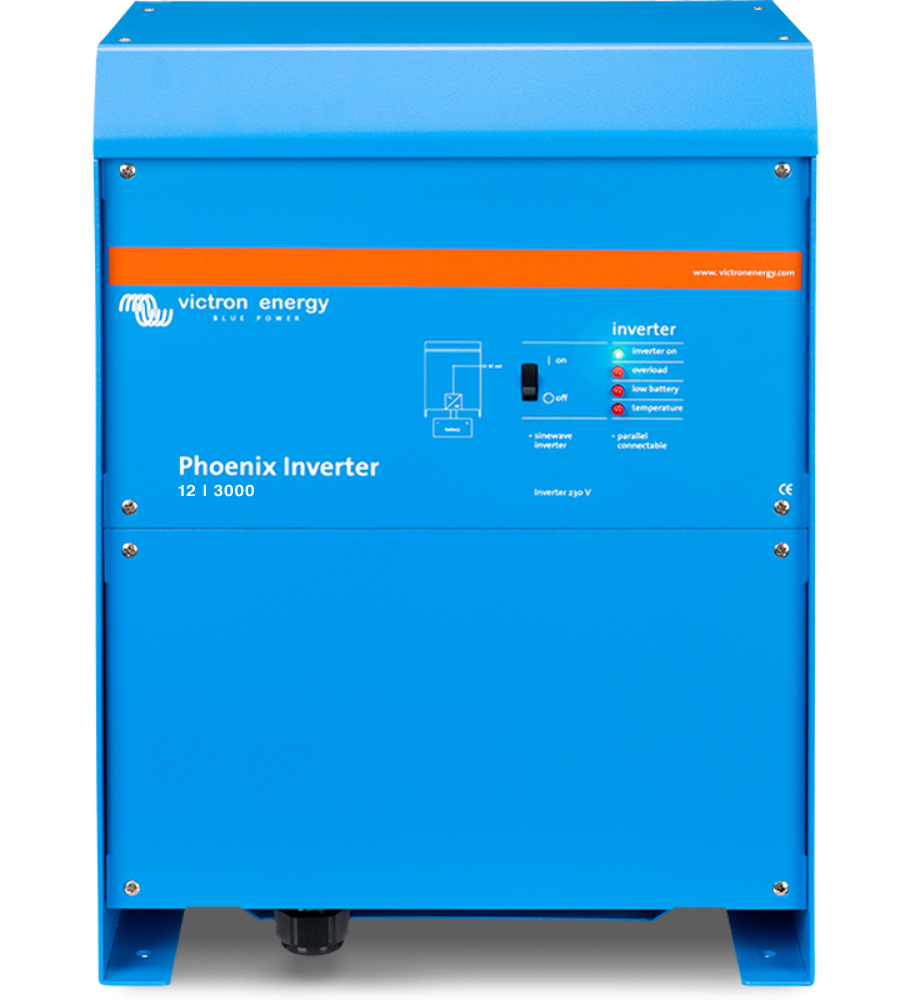
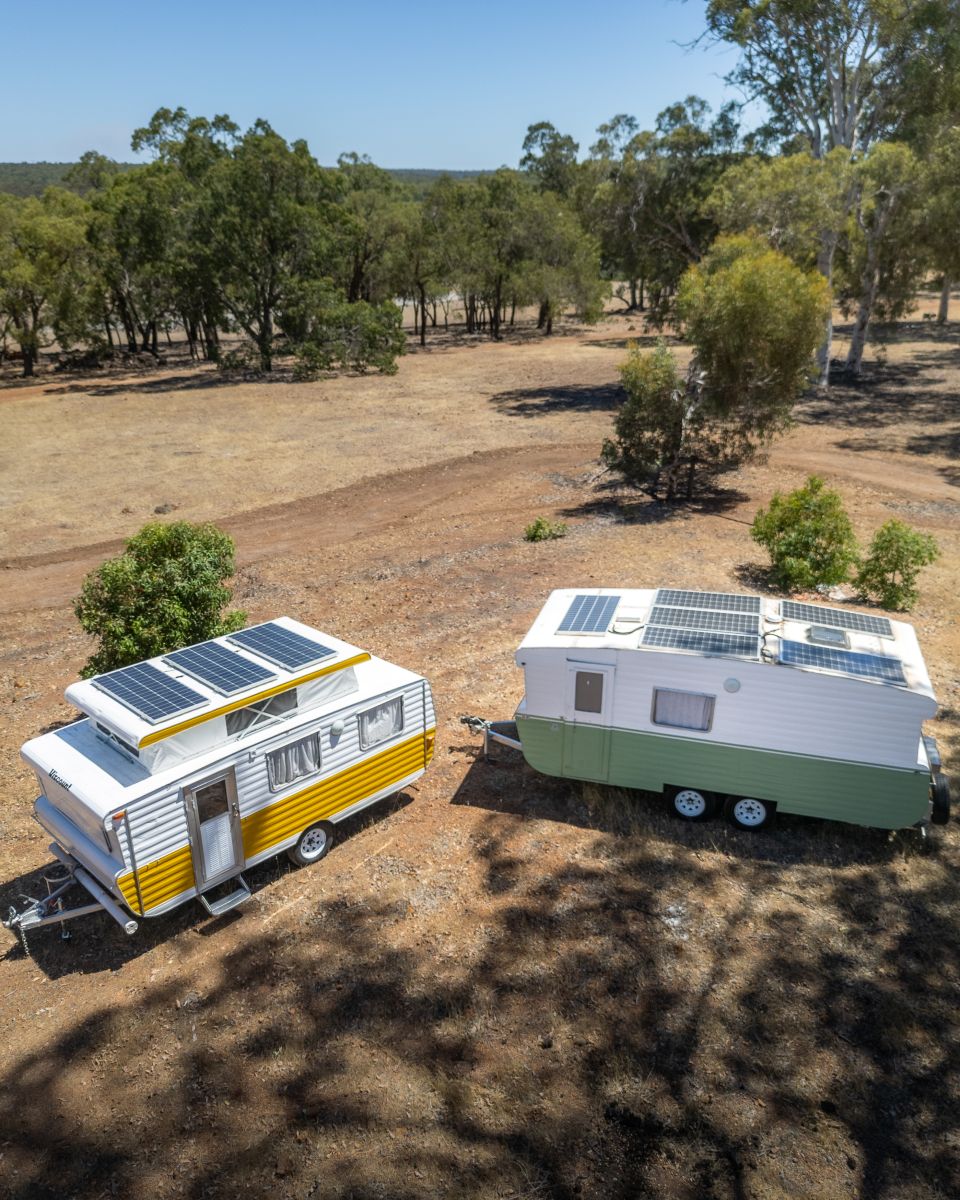
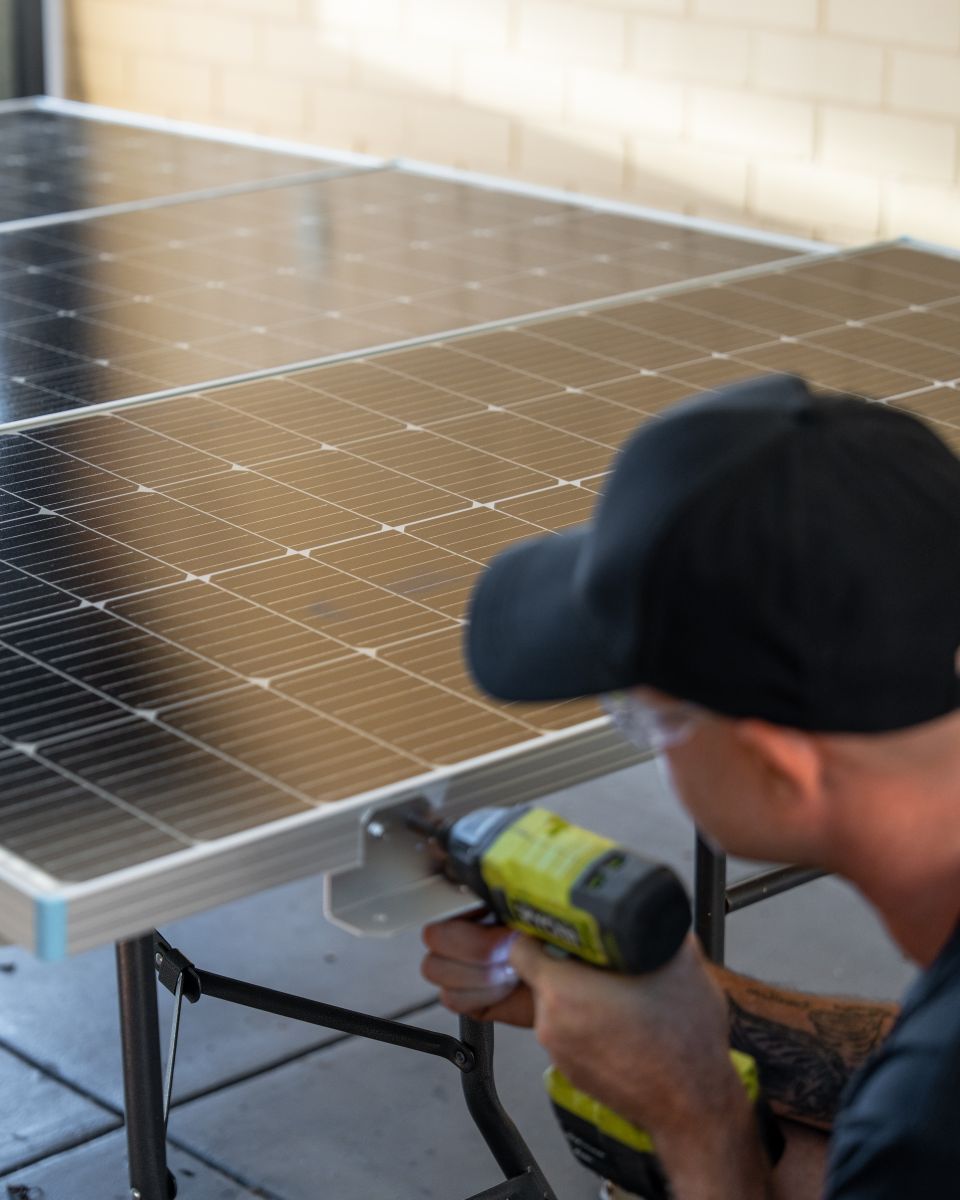
.jpg)





